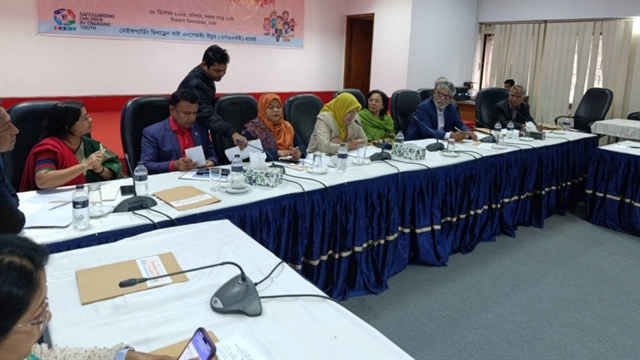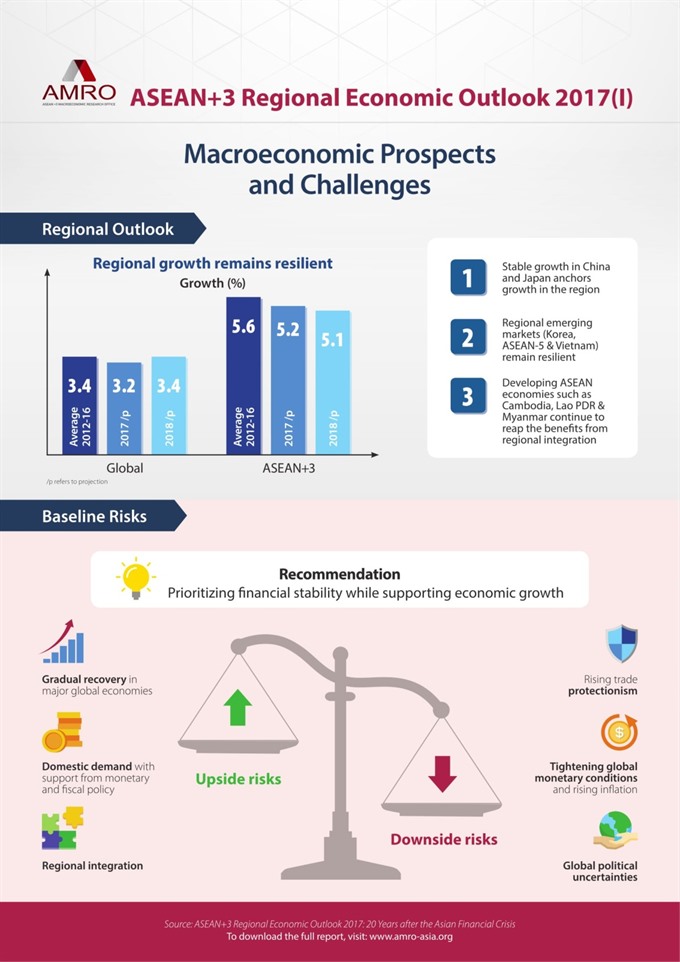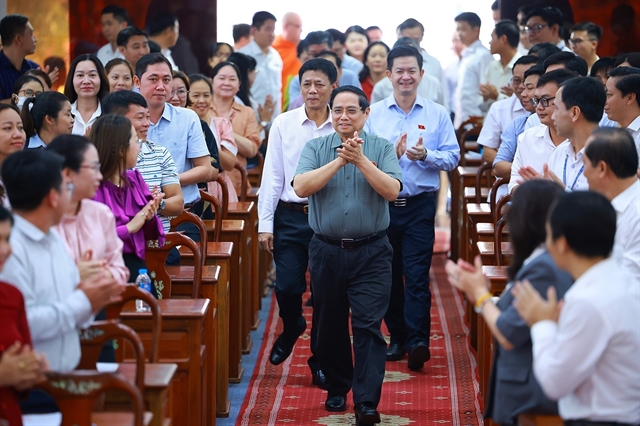 Economy
Economy

The ten ASEAN countries along with China, Japan and South Korea (ASEAN+3) are expected to experience moderate growth of around 5 per cent in the next two years despite external uncertainties.
 |
| Infographic of AMRO |
Ngọc Bích
YOKOHAMA — The ten ASEAN countries along with China, Japan and South Korea (ASEAN+3) are expected to experience moderate growth of around 5 per cent in the next two years despite external uncertainties.
This is one of the forecasts to emerge from the "ASEAN+3 Regional Economic Outlook", the first annual report produced by the ASEAN+3 Macro-economic Research Office (AMRO), released on Thursday.
According to the report, though the recent recovery in global trade could possibly drive up regional growth and exports, the ASEAN+3 growth rates in 2017 and 2018 are still predicted to be slightly lower than the level of 5.3 per cent seen in the past three years.
Explaining the prediction, AMRO chief economist Hoe Ee Khor said with the uncertain trade outlook, economic growth in the region would continue to be driven primarily by domestic demand with support from monetary and fiscal policy. “However, compared to 2016, room in monetary and fiscal policy has generally narrowed,” Khor said.
In term of monetary policy, rising inflation and tightening global monetary conditions in 2017 will reduce the room for regional economies to ease monetary policy to support growth, he said.
He noted that countries with high credit growth or external debt would have to struggle with maintaining financial stability while promoting growth by loosening monetary policy.
In addition, economies already relying on external financing for both current accounts and the fiscal balance would face tighter financing constraints when trying to expand fiscal policy, Khor highlighted.
He also warned of the capital outflow risks from emerging markets as a result of Fed interest rate hikes, which would put additional pressure on the exchange rate and on foreign exchange reserve.
Therefore, Khor suggested regional governments should continue maintaining exchange rate flexibility combined with rational intervention in the foreign exchange market to mitigate risks of external shocks.
“In the current uncertain global environment, it would be prudent for policymakers to prioritise financial stability,” Khor said.
He also urged regional governments and policymakers to speed up the structural reform agenda given that demand-stimulating measures could only be applicable in the short-term.
Answering questions by Việt Nam News about the fourth industrial revolution, Khor also said that the regional growth could be facilitated by the revolution, although automation and technology could have a negative impact in terms of job loss. “So, authorities should make sure the costs and benefits of the industrial revolution are evenly distributed by setting up social safety nets to protect those suffering,” he advised.
Related to the threat of protectionism, Khor said the recovery of global trade and commodity prices is threatened by US protection policies, but only economies with a large bilateral trade surplus with the US should be concerned.
However, globally, despite some sentiments of protectionism, “we haven’t seen a lot of protectionist measures implemented yet,” Khor said, adding that the region is sufficiently strong to withstand protectionism.
ADB President Takehiko Nakao, while addressing a news conference to open the ADB’s annual meeting on Thursday, said that “it’s too early to say protectionism is starting to harm Asia.”
Nakao said governments in the region should continue making efforts to further open trade for continued growth.
He urged members of the ASEAN and its six trading partners to continue negotiations on the Regional Comprehensive Economic Partnership, as well as other proposed bilateral free trade arrangements.
The AREO report also highlights that growth in the region’s two largest economies, China and Japan, remains stable and robust.
Accordint to the report, South Korea, Malaysia, Indonesia, the Philippines, Singapore, Thailand and Việt Nam remain resilient even as volatility in global financial markets persists. Developing ASEAN economies of Cambodia, Lao PDR and Myanmar continue to grow and reap benefits from regional integration. — VNS




